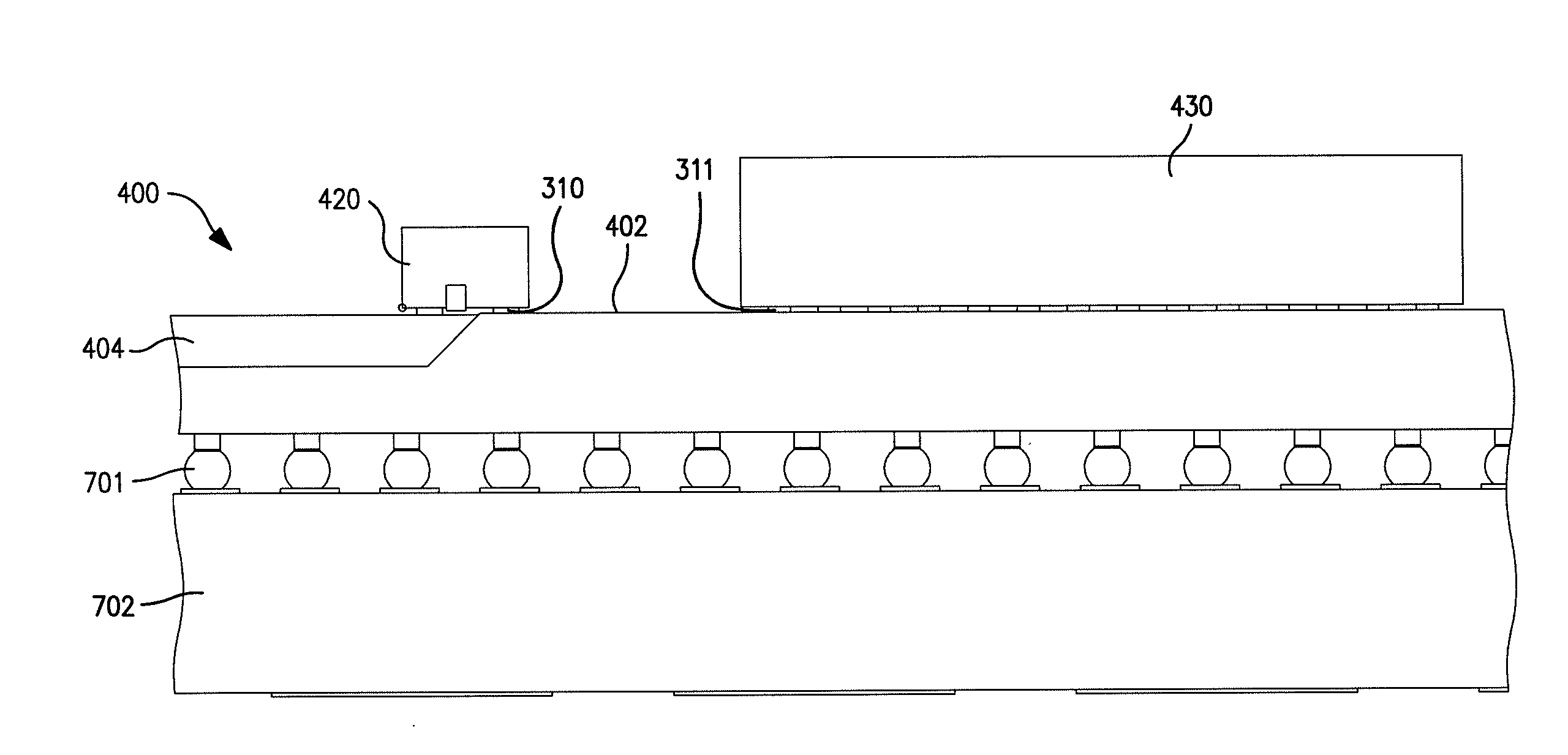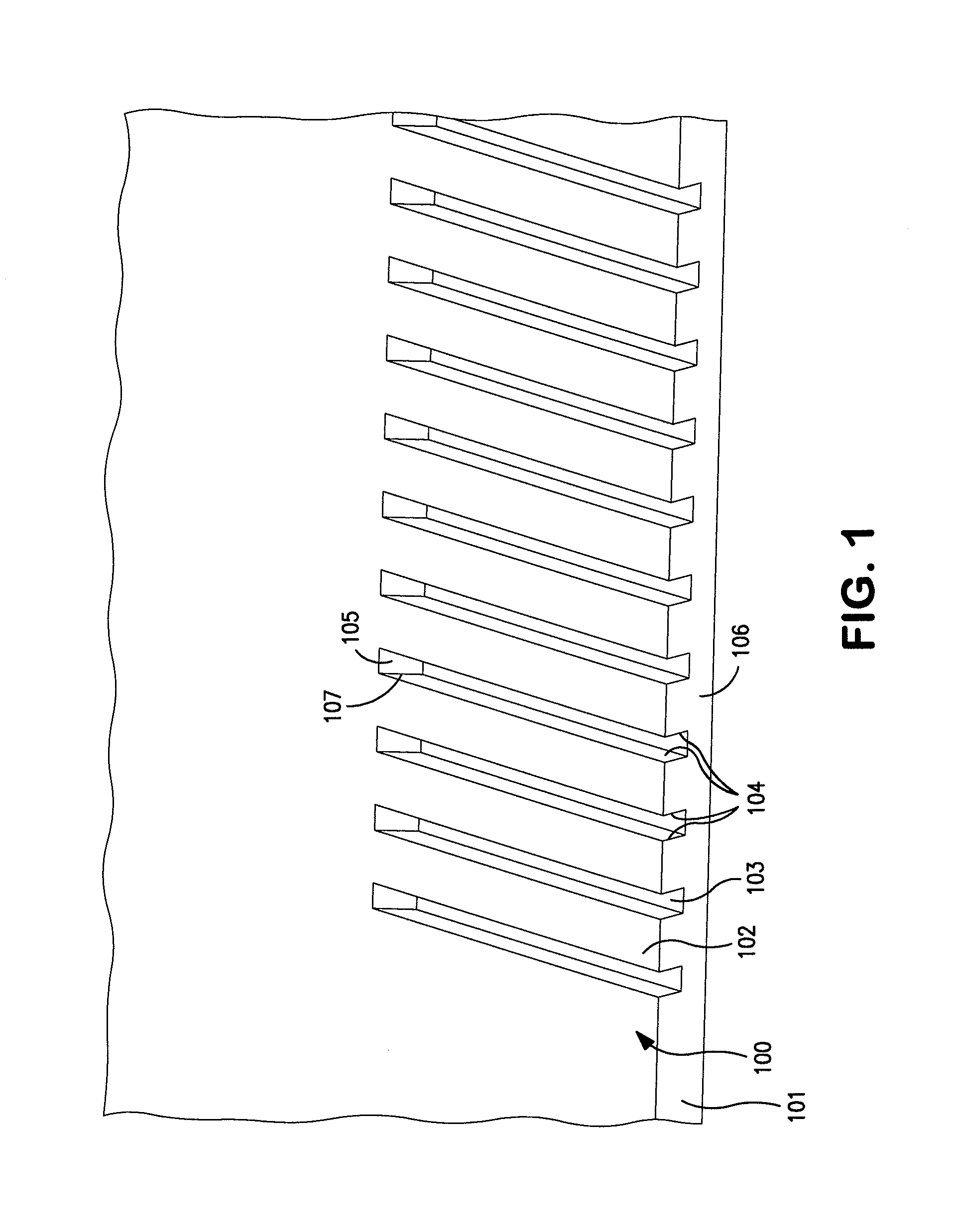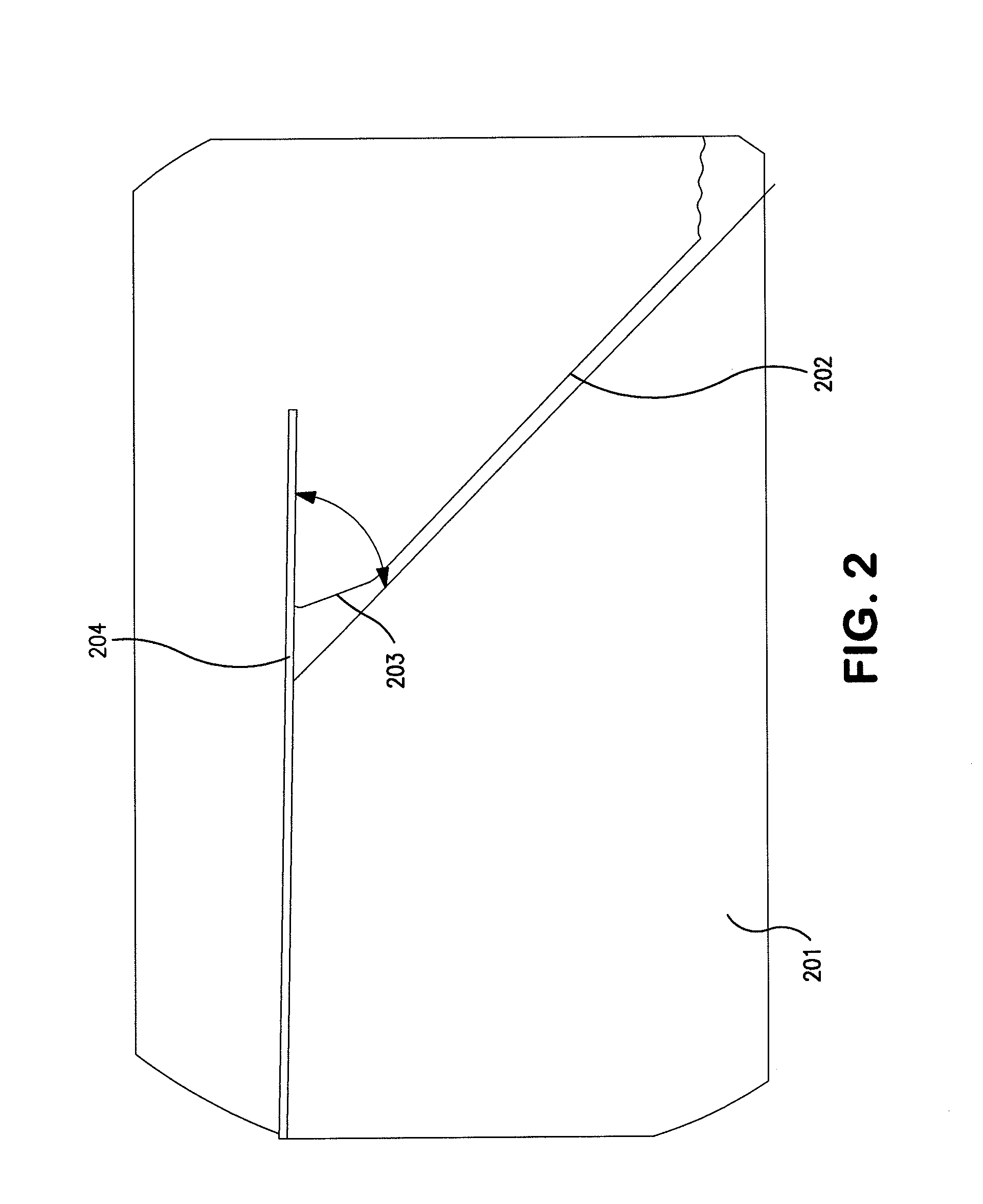Optical interposer
- Summary
- Abstract
- Description
- Claims
- Application Information
AI Technical Summary
Benefits of technology
Problems solved by technology
Method used
Image
Examples
Embodiment Construction
[0026]Referring to FIG. 1, one embodiment of an optical interposer 100 of the present invention is shown. The optical interposer 100 comprises a substrate 101 having a top planar surface 102 and at least one groove 103 defined in the top planar surface, extending from an edge 106 of the substrate to a terminal end 107. The groove 103 has side walls 104 and a first facet 105 at the terminal end, which is essentially perpendicular to side walls. The first facet is configured at a first angle α relative to the top planar surface. A reflective coating (not shown) is deposited on the first facet 105. Each of these elements and alternative embodiments are described in greater detail below.
[0027]A primary function of the interposer is to provide a substrate or backbone to support and secure an optical conduit, optical component(s) and supporting electrical circuitry. As used herein, an optical conduit refers to any know medium for facilitating the propagation of optical signal in a certain...
PUM
 Login to View More
Login to View More Abstract
Description
Claims
Application Information
 Login to View More
Login to View More - R&D
- Intellectual Property
- Life Sciences
- Materials
- Tech Scout
- Unparalleled Data Quality
- Higher Quality Content
- 60% Fewer Hallucinations
Browse by: Latest US Patents, China's latest patents, Technical Efficacy Thesaurus, Application Domain, Technology Topic, Popular Technical Reports.
© 2025 PatSnap. All rights reserved.Legal|Privacy policy|Modern Slavery Act Transparency Statement|Sitemap|About US| Contact US: help@patsnap.com



